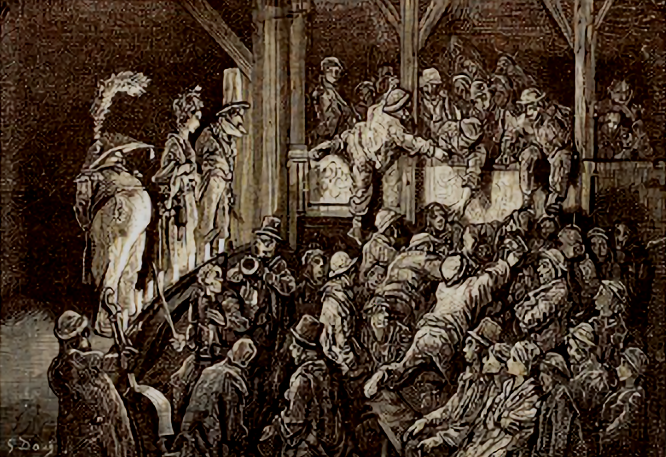Penny theatres, also known as penny gaffs, were a popular form of entertainment in the poorer areas of English Victorian cities.[1] Gaff was a term used to describe any public place of amusement, and penny referred to the entrance fee for this low-class form of theatre or music hall.[2] The lowest type of gaff was known as a blood-tub, or in Scotland as a geggie.[3]
Shows featured melodramas, music-hall artists and plays by Shakespeare, in performances lasting for no more than an hour, repeated many times during the course of an evening. Venues ranged from dwelling houses and shops, with room for only a very small audience,[1] to the Blackfriars Rotunda in London, which could accommodate an audience of a thousand, and for the more discerning patron offered superior seating for two or three pence.[4]

